The claim that pilates practice can lead to increased height has sparked curiosity and skepticism among fitness enthusiasts. Traditionally, height has been considered primarily determined by genetics, with little potential for change after reaching adulthood. This raises the question: Is there scientific evidence supporting the link between pilates and height growth, or is it merely a myth?
To investigate this claim, we need to examine the physiological mechanisms involved in pilates and how they might affect height. We must also evaluate anecdotal reports of height increases and consult expert opinions in the field. Through this exploration, we aim to determine whether pilates genuinely holds the potential to influence height or if this purported connection lacks substantial backing.
At the core of this inquiry lies the question of whether pilates’ emphasis on muscle strengthening and elongation can facilitate a transformative effect on one’s vertical dimension. By scrutinizing the science, anecdotes, and expert perspectives, we endeavor to unravel the truth behind the tantalizing claims linking pilates to increased height, challenging preconceptions and illuminating the potential benefits of this practice.
Pilates Unlocks the Illusion of Height Increase
While Pilates cannot physically make you taller, it creates the illusion of increased height through various transformative effects. At its core, Pilates strengthens the body’s core muscles, leading to better posture and spinal alignment. When you stand taller and more upright, you naturally appear heightened.
Furthermore, Pilates sculpts lean muscle mass while reducing excess fat. This combination results in a leaner, more streamlined physique, which visually elongates your frame. The practice also corrects spinal issues that may cause slouching, allowing you to stand straighter and appear taller.
Beyond the physical benefits, Pilates boosts self-confidence and grace in movement. As you become more attuned to your body, you tend to carry yourself with an air of confidence that enhances the perception of increased height.
In essence, Pilates doesn’t magically increase your height but rather combats the forces that can make you appear shorter. Through improved posture, spinal alignment, muscle sculpting, and self-assurance, it creates the illusion of a taller, more elongated physique.
The 9 best pilates exercises to increase your height
Leg circle
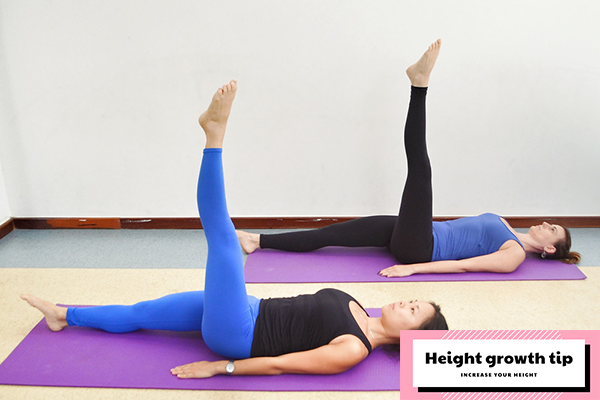
- Lie on your back on the carpet.
- Place both hands by your sides.
- Bend your left knee and place it flat on the floor.
- Stretch your right leg up so that it is perpendicular to the floor.
- Rotate your right foot four times clockwise and then turn counterclockwise.
- Try to make as large a circle as possible while keeping your lower back on the floor.
- Switch to left leg and repeat.
Pilates 100
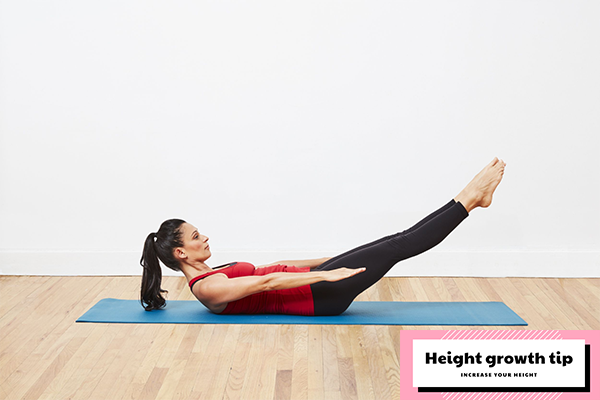
- Lie on your back.
- Lift both legs as shown to create an angle.
- Bend your head and stretch your arms as far as you can with your palms facing down.
- Move your arms up and down as you inhale for a count of five and exhale for a count of five.
- Do a full cycle of 10 breaths.
Grasshopper pose
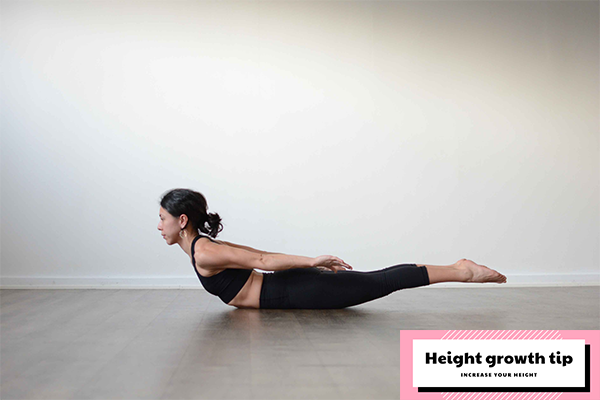
- Lie on your stomach with your hands clasped behind your back.
- Tighten your abs and start lifting your upper arms, legs and chest.
- Lower yourself gently and repeat.
Pilates roll
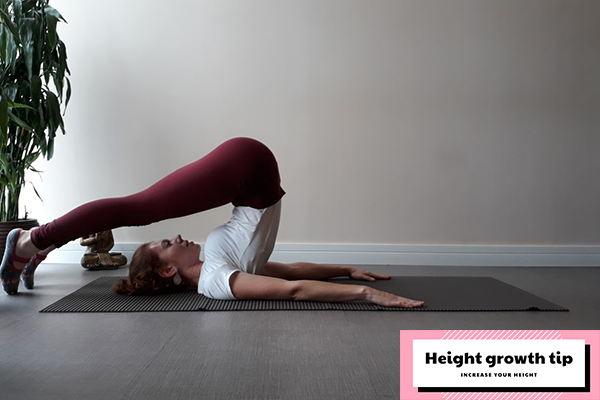
- Lie on your back with your arms by your sides, and your palms should be facing down on the rug.
- Slowly lift both legs with both feet pressed together upwards.
- Continue to bend your legs over your head with your toes pointing toward the floor.
- Try to keep your toes as close to the floor as possible.
- Maintain this position as long as possible.
Roll

- Lie on your back with your arms extended above your head.
- Slowly raise your arms overhead and then bend your spine up and off the floor.
- Bend down to a seated position and continue to fold your body over your feet, keeping your core tight the entire time.
- Slowly roll back onto the rug and repeat.
Plank Feet
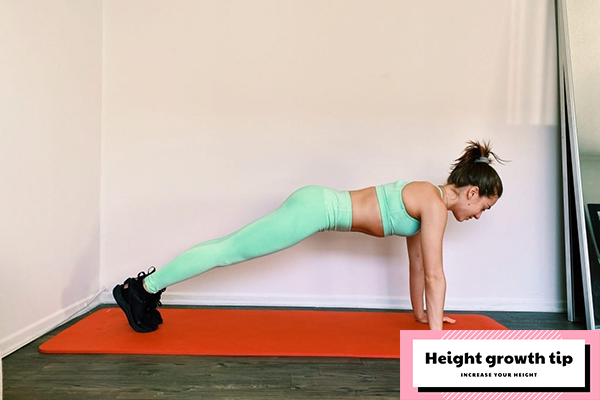
- Begin in a high plank with your hands under your shoulders.
- Alternate to lift one leg off the floor as high as you can but avoid going past the height of your shoulder.
- Keep your core, glutes and quads tight to prevent hip wobbles.
High board for spears
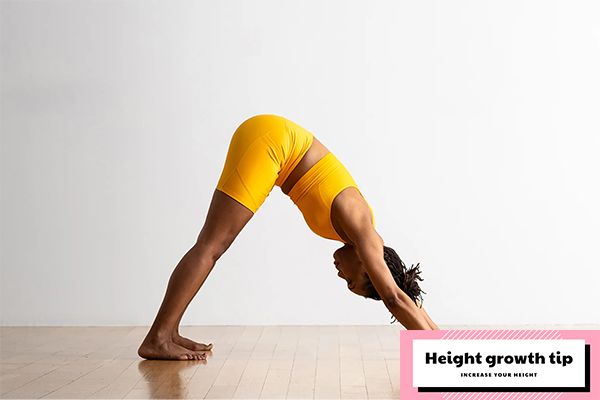
- Begin in a high plank with your palms flat on the floor, hands shoulder-width apart, and feet extended.
- Push your tailbone toward the ceiling while stretching your legs as much as possible.
- Bend your knees if you want to bring your heels closer to the floor.
- Return to high plank and repeat.
Bend forward
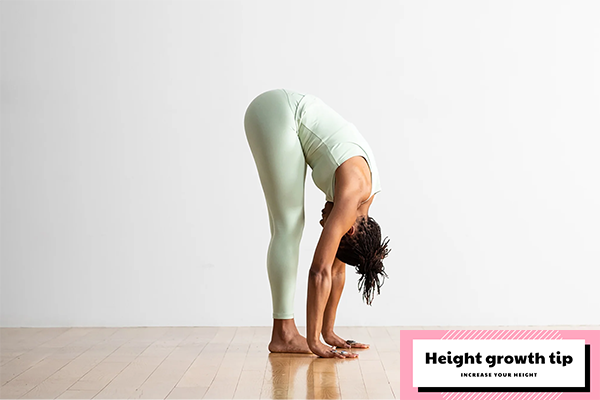
- Stand straight with a little distance and both feet parallel to each other.
- Bend your hips forward until your hands reach your feet or the floor.
- Maintain this position for a few seconds.
- Slowly return to starting position and repeat.
Exercise ball stretch

- Place your back to the center of the ball with your arms clasped together and extended above your head.
- Place your feet on the floor and balance your body.
- Maximize your leg strength, and bring the ball forward.
- Roll back and lift your breasts and off the ball.
- Maintain this position for 5 seconds and repeat.
Exploring the Comprehensive Health Benefits of Pilates
Beyond the well-documented advantages of Pilates in refining posture and fortifying the core, this versatile fitness discipline unveils a treasure trove of additional health benefits that deserve a closer look. Let’s embark on a deeper exploration of the myriad advantages it brings to the forefront.
- Facilitates Weight Loss: When paired with a balanced diet, Pilates emerges as a formidable ally in the pursuit of shedding excess pounds. This holistic exercise regimen not only sculpts muscles, leading to a more chiseled physique, but also incorporates techniques like weight and body resistance training. These facets synergistically contribute to an amplified calorie burn rate and a turbocharged metabolism, thus making it a potent tool for effective weight management.
- Enhances Flexibility and Mobility: Pilates seamlessly melds strength-building with the art of stretching, resulting in a substantial boost in flexibility, mobility, and overall bodily robustness. The controlled and deliberate movements intrinsic to Pilates exercises foster a harmonious equilibrium between muscle strength and flexibility, thereby optimizing the range of motion.
- Increases Energy Levels: Engaging in Pilates acts as a dynamic catalyst for improved blood circulation, reinvigorating muscles and the spine. This post-workout revitalization leaves the body feeling renewed and invigorated. Due to its low-impact nature, Pilates seamlessly integrates into daily routines, consistently delivering heightened energy levels and a profound appreciation for the practice itself.
- Reduces Back Pain: Many Pilates exercises place a strong emphasis on spinal elongation, advocating proper alignment and addressing muscle imbalances. By prioritizing the activation of core muscles over straining the lower back, Pilates emerges as a therapeutic cornerstone for alleviating back pain. It provides invaluable guidance in supporting and stabilizing the body, thus promoting long-term spinal health.
- Enhances Body Awareness: Pilates cultivates an elevated sense of bodily awareness, nurturing the ability to hone in on physical sensations and internal cues. This heightened self-perception not only enhances overall comfort but also augments awareness of one’s surroundings, diminishing the risk of falls and injuries.
In Summary:
While Pilates may not possess the mystical ability to increase one’s physical stature, it undeniably imparts a taller and more elongated appearance through its posture-enhancing effects. Furthermore, the profound health benefits of Pilates extend far beyond spinal health alone, contributing to a holistic sense of well-being, confidence, and vitality. It is a wellness journey that goes beyond the superficial, fostering a deeper connection between mind and body.
- Related post: Does Playing Badminton Make You Taller?

